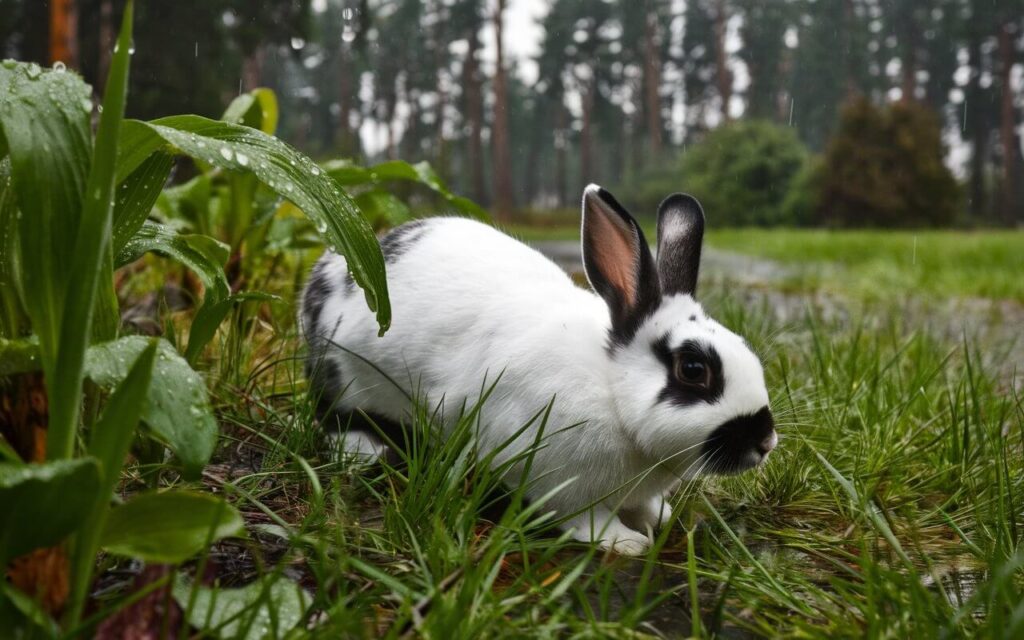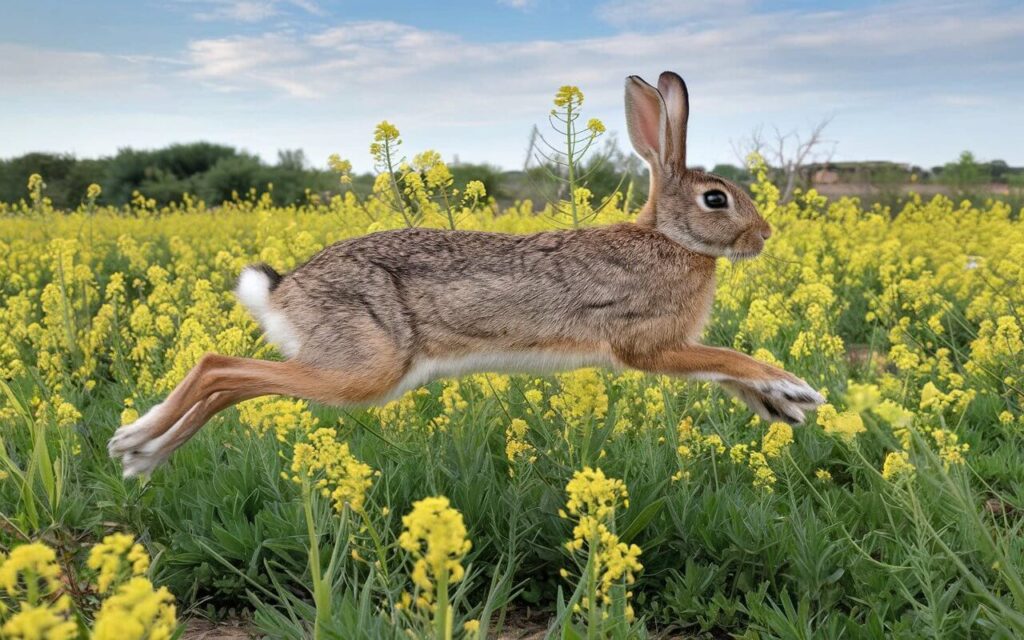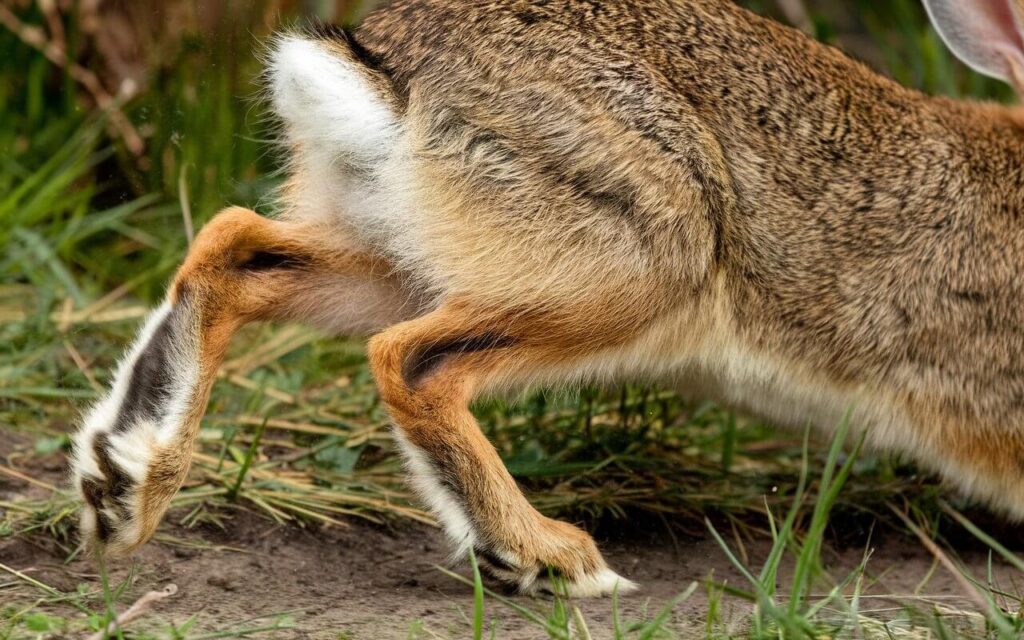Can Rabbits Crawl?
To understand do rabbits crawl, we first need to define what crawling actually means. In most animals, crawling involves dragging the body close to the ground, and using limbs to move slowly and subtly. Unlike animals like lizards or certain insects that crawl regularly, rabbits rely more on their powerful hind legs for a quick, hopping motion, which doesn’t align with the slow, creeping nature of crawling.
How Rabbits Move: An Overview
Rabbits are designed for hopping, a quick and efficient mode of transport that allows them to escape predators. Unlike many small animals, rabbits don’t typically crawl; their natural movement is hopping, which keeps them nimble and helps conserve energy. This motion differentiates them from other ground-dwelling creatures who may crawl to evade detection or move cautiously.
Do Rabbits Crawl Under Our Mobile Home?
Yes, it’s possible for rabbits to crawl or, more accurately, hop under mobile homes. While rabbits don’t crawl in the traditional sense, they can lower their bodies to squeeze into tight spaces. The shaded, sheltered area under a mobile home can seem like a cozy hiding spot or a safe place from predators for a rabbit. If you notice a rabbit going under your mobile home, it might be seeking safety, warmth, or even a nesting site. Blocking access points or placing deterrents can help keep rabbits from using this space if they’re causing issues.
What Makes Crawling Difficult for Rabbits?
The body structure of a rabbit simply isn’t suited for crawling. Their strong back legs are built for forceful leaps, while their forelimbs provide balance rather than propulsion. These anatomical features make hopping much easier than crawling. Additionally, crawling requires a body closer to the ground, whereas rabbits need to maintain a position that prepares them for sudden sprints.
Differences Between Crawling and Other Movements
It’s important to distinguish between crawling and similar movements like creeping or crouching. When a rabbit moves low to the ground, they might appear to “creep” or hunch low, but they’re not crawling. Instead, they’re likely adjusting their posture to remain undetected or prepare for a quick movement.
Situations Where Rabbits Might Appear to Crawl
There are times when a rabbit may seem as though it’s crawling. For instance, when hiding from predators or staying cautious in unfamiliar territory, a rabbit may crouch low to the ground, moving in a way that resembles crawling. However, this is more about staying hidden than actually using a crawling motion to get from point A to point B.
Rabbit Body Mechanics: How Their Limbs Function
The body mechanics of a rabbit are unique. Their back legs are powerful and elongated, giving them an advantage in speed and agility, especially over short distances. In contrast, their front legs are shorter and function as support, balancing their body. This anatomy naturally predisposes rabbits to hop instead of crawl, as the structure doesn’t support prolonged, ground-hugging movements.
Can Baby Rabbits Crawl?
In the earliest stages of life, baby rabbits, or kits, may exhibit crawling-like movements. Born blind and almost immobile, these tiny kits rely on wriggling or scooting close to the ground to move toward their mother. However, this form of movement doesn’t last long. As they grow, they quickly develop the ability to hop.
Do Wild and Domestic Rabbits Move Differently?
While domestic rabbits may have fewer threats than their wild counterparts, their movement style remains the same. Hopping is an instinct, deeply embedded regardless of the environment. However, domestic rabbits may be more relaxed and slower in their movement, whereas wild rabbits exhibit quicker, more alert hops to escape potential threats.
Rabbit Behavior and Movement in the Wild
In the wild, rabbits use their movement to stay safe from predators, often hopping rapidly to escape danger. They also dig burrows and tunnels, using their front paws for digging and back legs for pushing soil aside. Hopping proves more efficient than crawling when it comes to quick getaways, especially in open spaces where they’re more visible.
Movement in Different Rabbit Breeds
While hopping is common across all rabbit breeds, some larger breeds like Flemish Giants may appear slower or more lumbering in their movements due to their size. Smaller, more agile breeds, such as Dwarf or Rex rabbits, display quicker, nimble hops that suit their petite frames.
How Rabbits Use Their Limbs in Everyday Activities
Besides hopping, rabbits use their limbs for various tasks, like scratching their ears, grooming, and adjusting their posture while sitting or lying down. When digging, they rely heavily on their front paws, while their back legs provide power. Crawling, however, isn’t part of these daily activities, as it doesn’t fit with their body mechanics or needs.
Is Crawling a Sign of Injury in Rabbits?
If a rabbit is seen moving close to the ground or appears to be crawling, it may signal a health issue. Conditions like muscle strain, arthritis, or injuries can limit their ability to hop. Observing a rabbit closely can help determine if the movement is due to a temporary discomfort or a chronic condition requiring veterinary attention.
How to Support a Rabbit’s Natural Movements
Rabbits need space to hop and exercise, which helps maintain their physical health. Creating an environment where they can safely explore and jump around is essential, whether they’re kept indoors or outdoors. Avoid surfaces that could injure their delicate limbs, and consider providing ramps or soft areas to encourage active movement.
Fruits for Rabbits
Vegetables for Rabbits
- Cucumbers
- Carrots
- Cabbage
- Broccoli
- Lettuce
- Kale
- Tomatoes
- Asparagus
- Catmint
- Celery
- Bell Peppers
- Green beans
Conclusion
Rabbits are fascinating creatures with unique movement styles that make them both adorable and agile. While they don’t crawl, their hopping capabilities have evolved perfectly to suit their survival needs, allowing them to navigate the world with speed and precision. Understanding rabbit behavior and movement gives us insight into what these amazing animals need to thrive.
FAQs
- Do rabbits ever crawl like other animals?
No, rabbits don’t crawl like animals such as reptiles or certain insects. Instead, they hop due to their unique limb structure. - Why do rabbits hop instead of crawl?
Hopping allows rabbits to escape predators and navigate quickly. Their strong back legs are designed for jumping, not crawling. - Can a rabbit’s movement be affected by injury?
Yes, if a rabbit appears to crawl or move unusually, it may indicate an injury or illness, requiring a vet’s attention. - Do baby rabbits crawl when they’re first born?
Newborn rabbits make crawling-like motions initially, but they soon develop the strength to hop as they grow. - How does a rabbit move?
Rabbits primarily move by hopping, using their powerful back legs for quick and agile jumps.








Leave a Reply